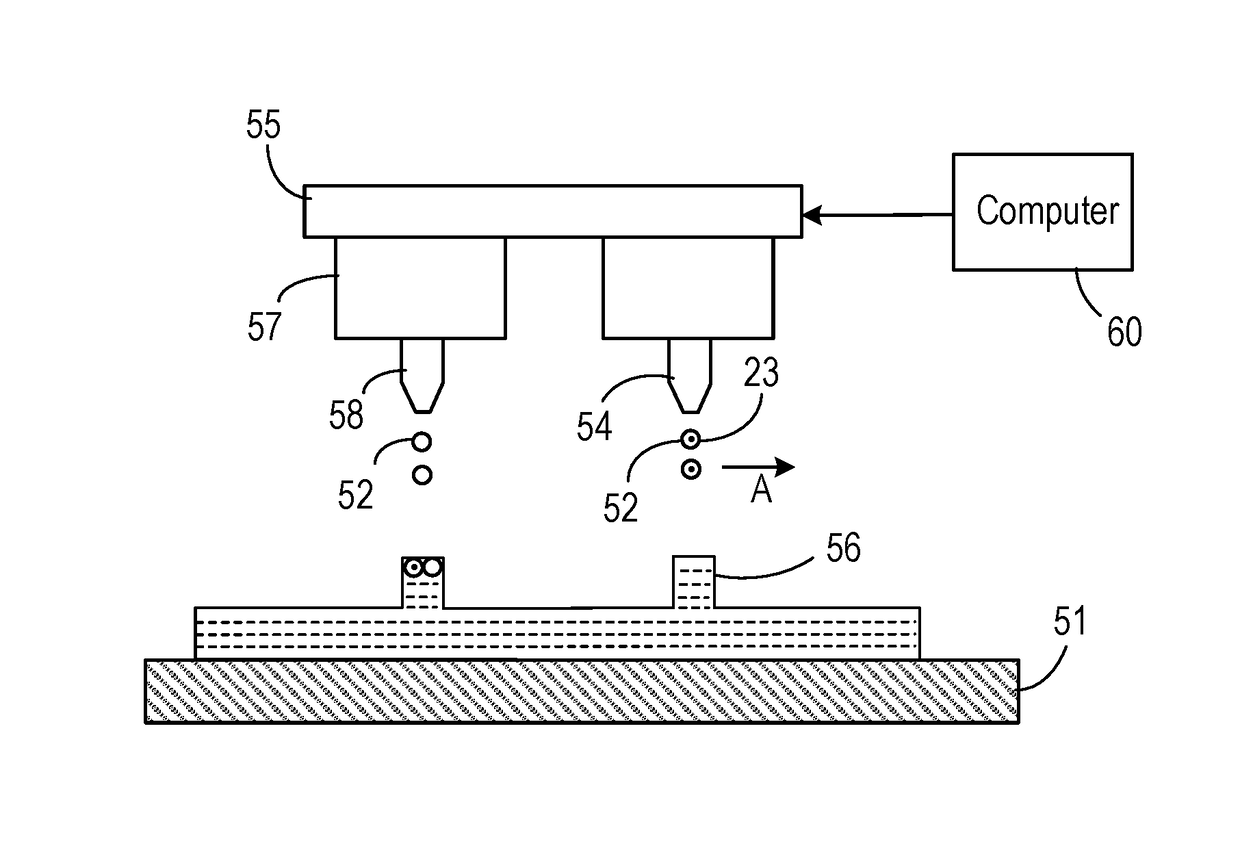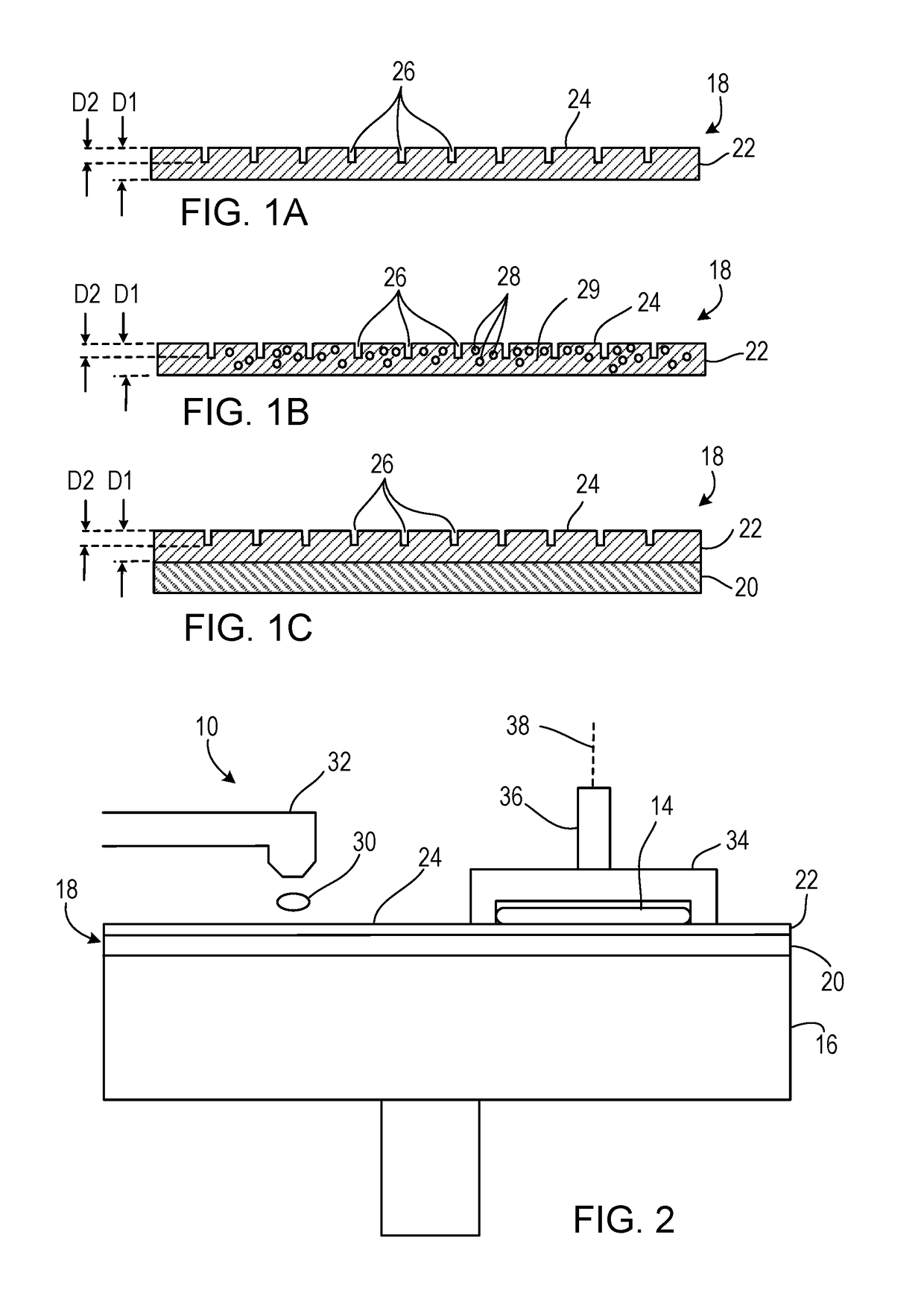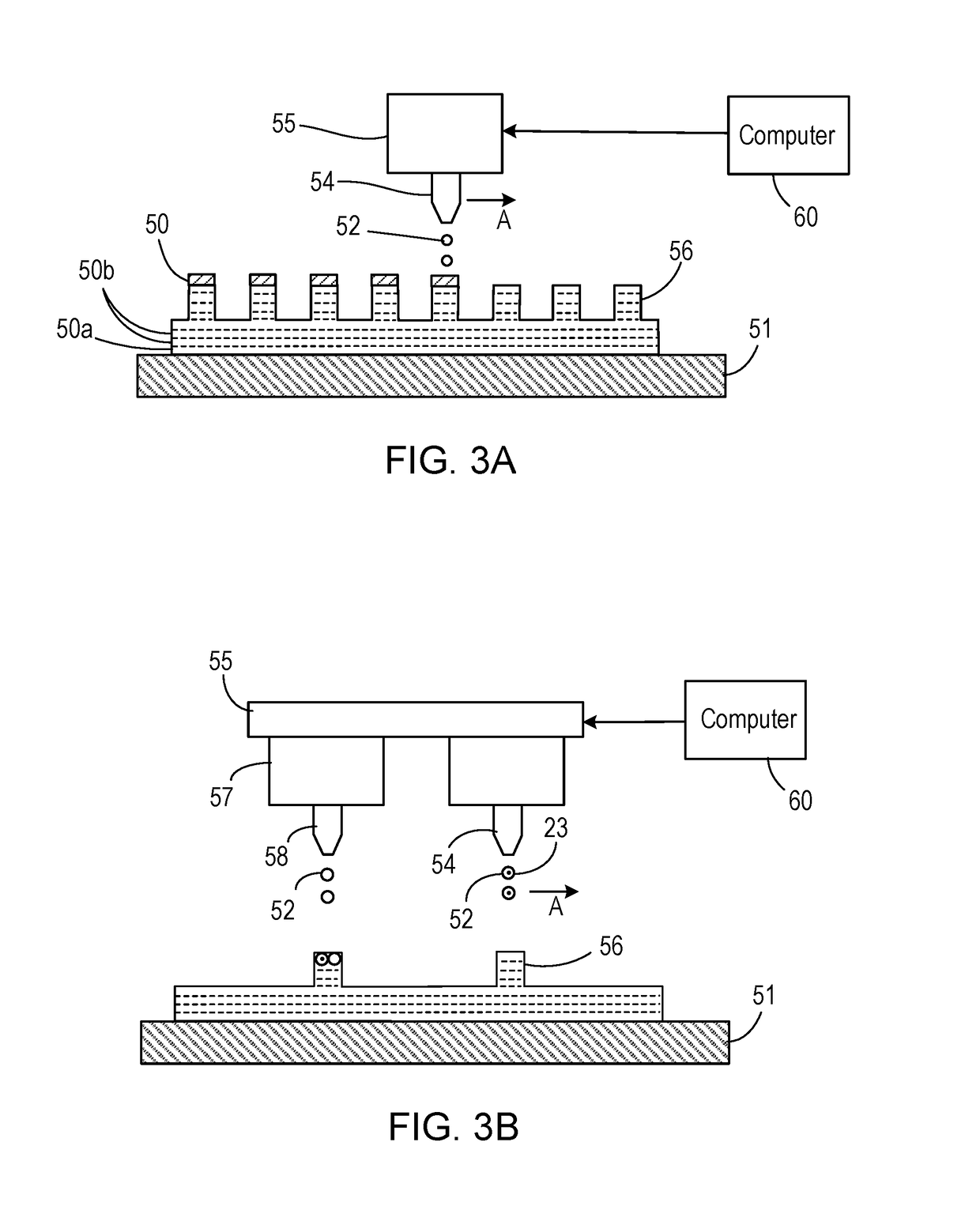Printed chemical mechanical polishing pad having abrasives therein and system for printing
a technology of polishing pad and abrasives, which is applied in the field of polishing pads, can solve the problems of scratching or other defects, particle in the polishing slurry being unsuitable for polishing, and posing various problems in the polishing slurry
- Summary
- Abstract
- Description
- Claims
- Application Information
AI Technical Summary
Benefits of technology
Problems solved by technology
Method used
Image
Examples
Embodiment Construction
[0024]Referring to FIG. 1A-1C, a polishing pad 18 includes a polishing layer 22. As shown in FIG. 1A the polishing pad can be a single-layer pad that consists of the polishing layer 22, or as shown in FIG. 1C the polishing pad can be a multi-layer pad that includes the polishing layer 22 and at least one backing layer 20.
[0025]The polishing layer 22 can be a material that is inert in the polishing process. The material of the polishing layer 22 can be a plastic, e.g., polyurethane, acrylate, epoxy, acrylonitrile butadiene styrene (ABS), polyetherimide, or polyamides. In some implementations the polishing layer 22 is a relative durable and hard material. For example, the polishing layer 22 can have a hardness of about 40 to 80, e.g., 50 to 65, on the Shore D scale.
[0026]As shown in FIG. 1A, the polishing layer 22 can be a layer of homogeneous composition, or as shown in FIG. 1B the polishing layer 22 can include abrasive particles 28 held in a matrix 29 of plastic material, e.g., pol...
PUM
| Property | Measurement | Unit |
|---|---|---|
| Abrasive | aaaaa | aaaaa |
| Thermoplasticity | aaaaa | aaaaa |
| Distribution | aaaaa | aaaaa |
Abstract
Description
Claims
Application Information
 Login to View More
Login to View More - R&D
- Intellectual Property
- Life Sciences
- Materials
- Tech Scout
- Unparalleled Data Quality
- Higher Quality Content
- 60% Fewer Hallucinations
Browse by: Latest US Patents, China's latest patents, Technical Efficacy Thesaurus, Application Domain, Technology Topic, Popular Technical Reports.
© 2025 PatSnap. All rights reserved.Legal|Privacy policy|Modern Slavery Act Transparency Statement|Sitemap|About US| Contact US: help@patsnap.com



